For Unmatched Ease of Use in Construction Business Automation, Artistic Stone Design Chooses Ragic Over Microsoft Access

Ken Kueny, Owner of Karn Custom Woodwork and Artistic Stone Design
“And I looked at Access because I thought, well, Access is surely capable. And it's so sad. I mean, to my way of thinking, your tool should be Microsoft Access. That should be what Microsoft is providing because it's easy to use.”
Ken mentioned that Ragic is 'a joy to use'; and for me, Ken is someone who is 'a joy to talk to’. I hopped in an hour chat with Ken, a former aerospace engineer that now owned 2 small businesses in Richmond, Virginia, with his son. He shared how he enjoyed the process of automating his own company, Artistic Stone Design, with Ragic, and why he chose Ragic.
First Reason: The Shallow Learning Curve
Ken didn’t turn to Ragic lightly; he had worked with a lot of database-related tools, such as PHP, MySQL, PowerBI, etc. During his search for a no-code database to handle his workflow, he compared Ragic with other no-code tools like Microsoft Access and was amazed by how easily he got his hands on Ragic. With sufficient learning resources and responsive customer support when he had questions, Ken managed to get his Ragic database coded, tested, and operational in just over a week and has been running smoothly ever since, managed solely by him.
This shallow learning curve on Ragic has not only allowed him to build his database effortlessly but also allows him to revisit and make tweaks easily as his company grows and workflows change. Previously, with other tools like MySQL, although he built everything on his own, spent months building the features to meet his needs, when adjustments were needed after a few years, it often took significant time and effort to remember and understand what he did before being able to make adjustments, like re-learning it all over again. It always led to an "Oh my god… how did I do that?" moment. This problem is not encountered with Ragic.
Second Reason Is Pretty Straightforward: The Native PDF Generation Capability
Ken’s first company, which is a woodworking company, equipped him with the experience of automating his workflow with PHP and MySQL. When one day he stumbled into the needs of generating an industry-standard billing in a PDF format, Ken didn’t have the skillset and didn’t want to waste time to get that deep into it, so he hired a developer to code this feature in their front-end for them. Now, the system is stable and working well, but the developer has since moved on, leaving them at a dead end. They cannot further improve their system.
From this experience, when looking for a system to automate the workflow for the company he acquired second (Artistic Stone Design), which is a countertop company, Ken prioritized finding a solution with native PDF generation capabilities—something Ragic offers. Yes, Ken was amazed by how easy he got his hands on Ragic, but during his search around 2021, when no-code tools were trendy, truth be told, he found many tools to be very user-friendly.
So, what made Ragic succeed in winning Ken over? All the flexibility minus the complexity in Ragic’s PDF generation, with the capability to directly send the pdf via email. Ken only needed to design a sheet for their invoice that meets their industry-standard billing. There is no rigid structure that dictates how the PDF looks, and whenever needed, there's an action button to automate the process of sending the pdf via email.
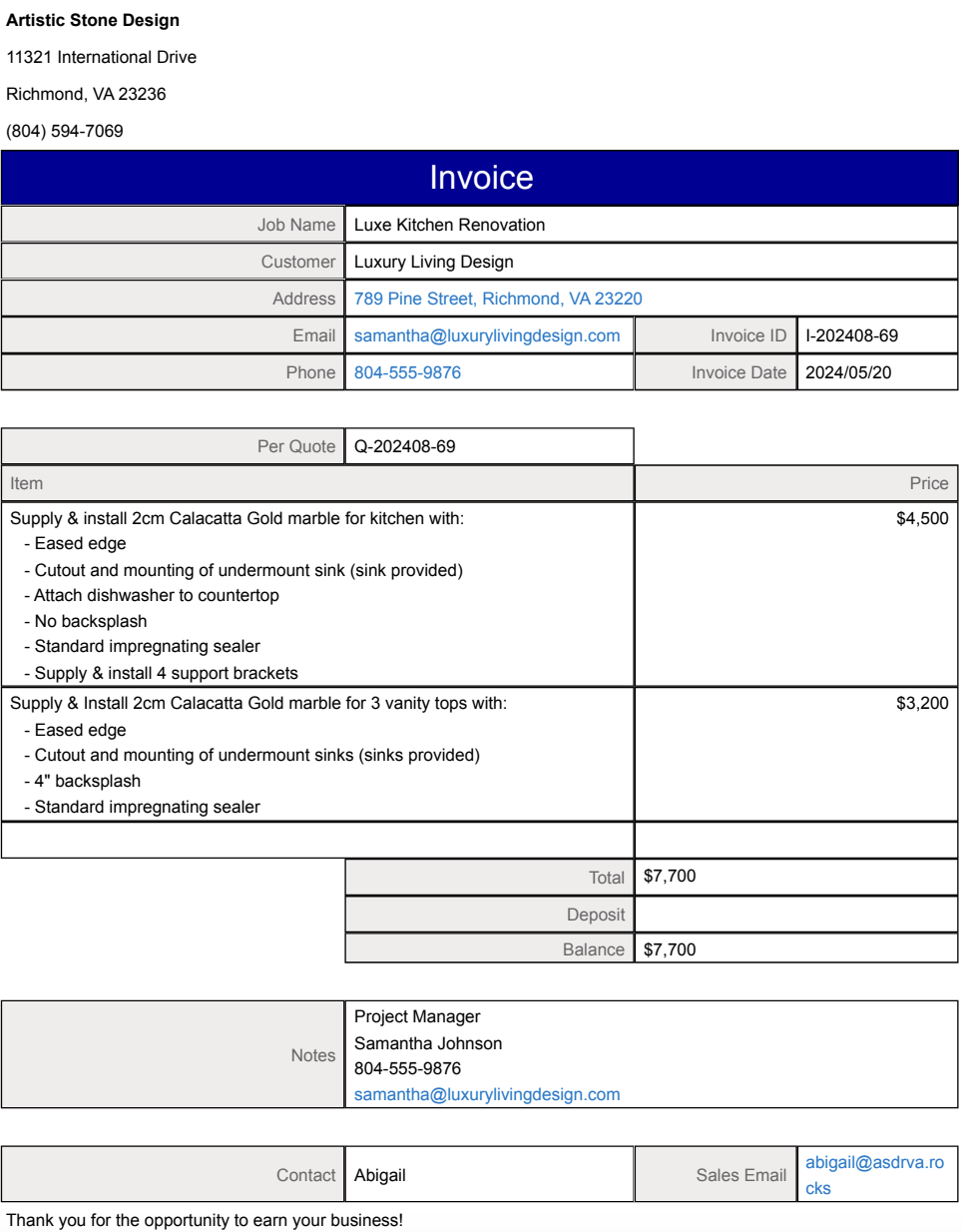
Artistic Stone Design's Industry Standard Sample Invoice
About Ken, From Aerospace Engineering to “The New Chapter of His Life”
Ken's journey from aerospace engineering to entrepreneurship in the construction industry caught my attention when I came across one of his Ragic Support Tickets.
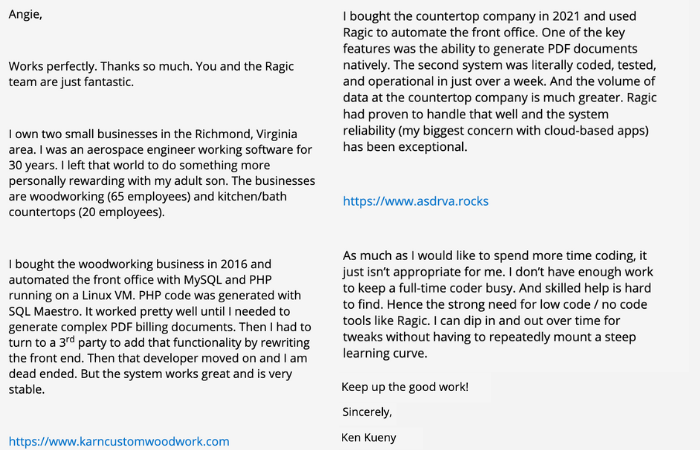
I asked him why transitioned, he said, “Some people say it’s retirement, but I see it as “A new chapter of my life”.
His decision to enter the construction industry wasn't based on a particular preference for that field. Instead, he emphasized the importance of pursuing something of his own, particularly something he could share with his son.
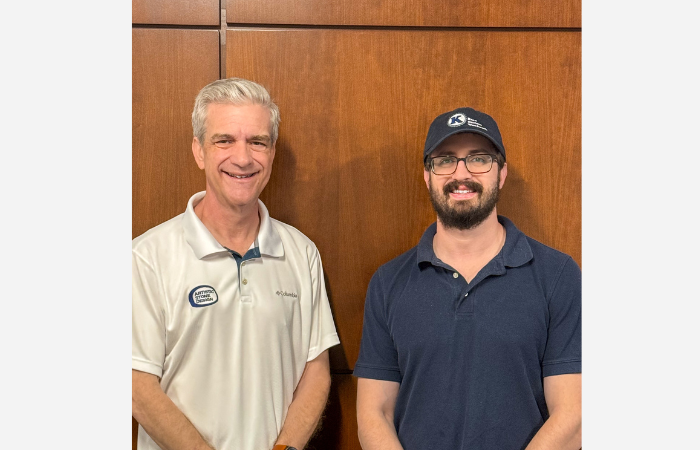
Ken Kueny and Son
When he first bought his woodworking company in 2016, the fact that everything was paper and handwriting stressed him. So he decided to automate the process with something he is familiar with, PHP and MySQL.
“I like to automate things. Once we’ve had the whole workflow automated, a job of two weeks can be done in 2 hours.”
After successfully managing his woodworking company, Ken identified that 10% of his revenue was passed through countertop companies to do the stone work. However, a mismatch in project timelines emerged. Countertop company, focusing on fast-paced residential projects with quick turnovers, often couldn't align with Ken's woodworking schedule, which handled longer-term projects. This cycle continued until 2021 when Ken made a strategic decision to acquire a countertop company, Artistic Stone Design, to align with the woodworking schedule which is mostly bigger markets, long term projects.
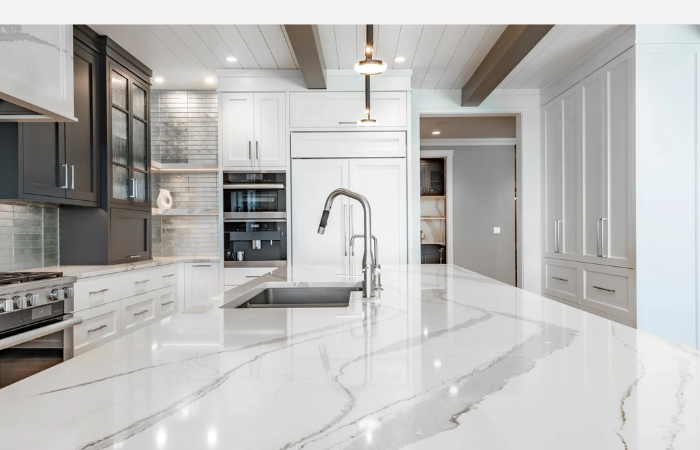
One of Artistic Stone Design's Projects
Of course, this acquisition was followed by the need to automate the workflow. Yet, Ken couldn’t simply copy and paste the system used in his woodworking company due to certain differences between the two business models.
In 2021, the low-code no-code trend was prevalent, along with the consideration of finding a tool with native PDF generation capabilities, and the experience of being left dead-ended by a third-party developer, he decided on Ragic.
The Before and After Ragic
The QuickBooks Era
When Ken acquired Artistic Stone Design, the company was using QuickBooks. The upside was that it stored records of all quotes ever made, but the downside was the system became overloaded with numerous old quotes.
Quoting Ken, “There were old estimates that just brought it to its knees.”
It was just not the right tool for the job. In this industry, there were more than quotes and estimates to handle.
Where Did the Slabs Go?!
“When I bought the company, the previous owner gave me a spreadsheet. It was his inventory on the day it was taken. So when I bought the company, I was like, can I get an update of that spreadsheet?
And he's like, it's not automated. And I'm like, oh God. So we had to go out and literally count every slab. They're not even marked. This is crazy.”
Artistic Stone Design handles around 800-1000 slabs with different materials like granite and quartz, each worth around a thousand dollars. This inventory chaos led to a lot of time and effort to locate a slab, or even worse, there were instances where they couldn’t properly provide a slab promised for a certain project. So Ken decided to do something to solve this “craziness”.
“Probably the first month I went to Amazon, I got 1500 customized barcode stickers and a little scanner gun for less than a hundred bucks. And we went and put little tags on each slab and on each stand. So now, every morning I have somebody walk around, it takes them 10 to 20 minutes. And they scan each slab and each stand so we know exactly what we have and where it is. Now we've got it refined to the point where I upload that into a table in Ragic and we've got a live inventory every day. We can tell exactly where each slab is.”
“If you've got, you know, $800,000 worth of inventory, you probably should track it. “
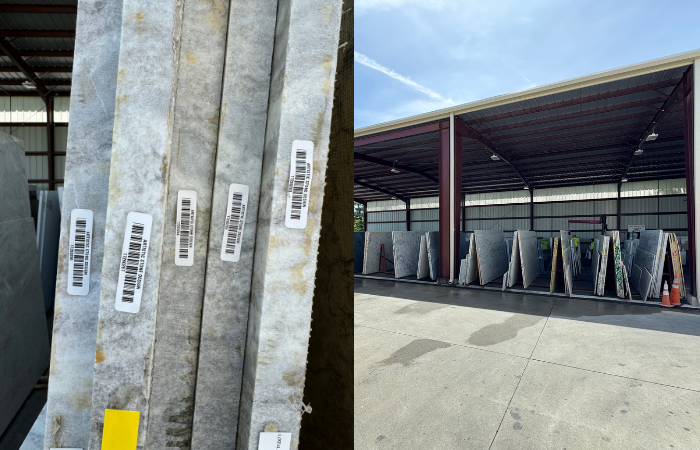
Artistic Stone Design's Inventory
The Sticky-Notes Billing
“Our bookkeeper had binders with sticky notes. And that was our billing process. And I'm like, oh my God, this is hundreds of thousands of dollars. Yeah. And you stick it, and it can fly away.”
Now, all this vital information resides in one convenient place, Ragic—Quotes, Work Orders, and Invoices are neatly organized and easily accessible. During a brief one-hour meeting, essential team members, including project managers, gather to discuss each project. They input completion percentages, providing a clear overview of generated revenue and ensuring alignment on project schedules. And of course, those hundreds of thousands of dollars billing are way more well tracked, with no risk of flying away.
These 3 key sheets, Quotes, Work Orders, and Invoices, are also Multiple Versions of each other. Ken maintains a superset of all possible fields for all three sheets, and each sheet version will only hold relevant information tailored to its purpose and audience. For instance, Internal Notes are excluded from Invoices because they are shown to customers, and Cost Information is omitted from Work Orders because the ground staff doesn't need it. However, Customer Details and Item Information are shared across all versions. This approach ensures consistency, maintains confidentiality, and keeps each view streamlined, showing only the necessary data without overcrowding the sheets.
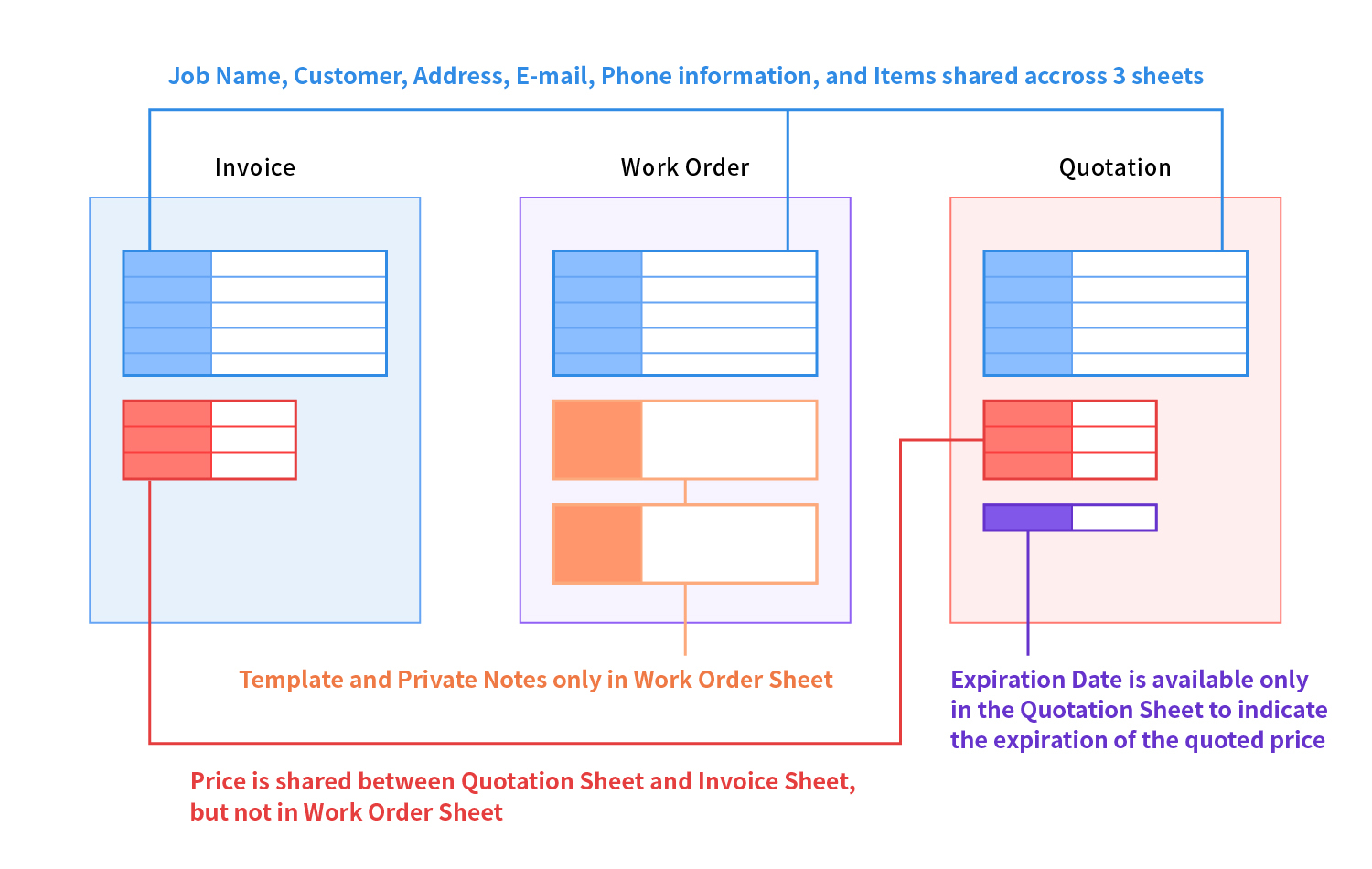
Moreover, Ken now has access to comprehensive reports detailing material costs, shop labor, installation labor, and subcontracted labor. He can also analyze the average cost per square foot to gauge performance. This insightful data helps identify successes and areas for improvement, impacting future decision-making such as: Do they need to raise prices?
Precision, Precision, and Precision
In Ken’s first woodworking database with PHP and MySQL, everything is in text. The file size is extremely small and it has been running quite solidly ever since. Ken set a goal for himself to keep the database from getting bloated.
But with stone work, Ken deals with projects that require very high accuracy—typically, they aim to achieve tolerances within a thousandth of an inch. So the requirements are much tighter than in woodworking. In woodworking, if the fit isn't perfect, adjustments can often be made, with stone, there’s not really this option, or at least it is much harder to achieve.
Once more, Ragic rises to the occasion. Ken can easily attach PDFs, pictures, and image vector files, such as AutoCAD DXF files (BLOBs, binary large objects), to his Work Order Sheet. These files are run through CAM software (computer-aided manufacturing) to establish tool paths on the saw and router for cutting the pieces, ensuring accurate cuts. This capability has not only allowed Ken to work with precision at a high level and enjoy the convenience of having critical data consolidated, no more important pieces of paper floating around.
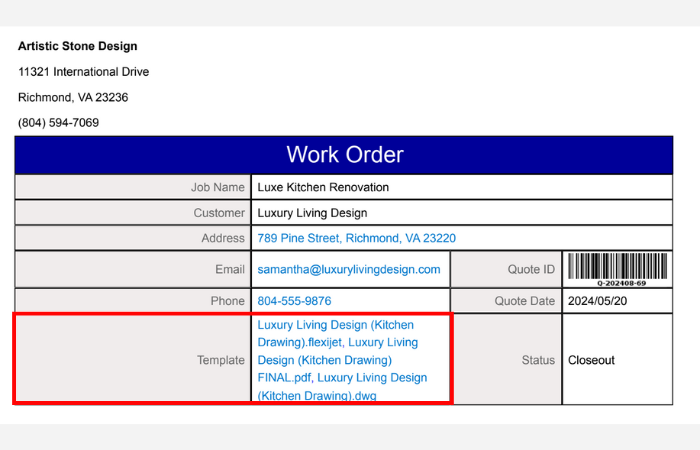
Artistic Stone Design Work Order Sample
Category: Case Studies > Constructions



